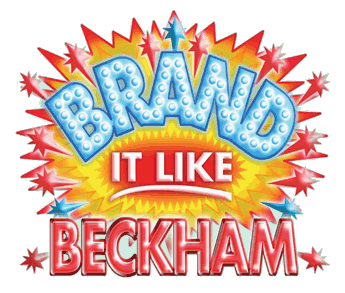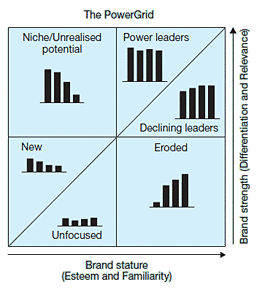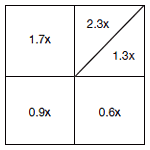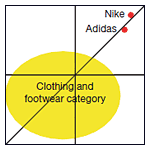
Some brands are becoming major cultural phenomena, and if yours isn't, it will struggle to survive. Simon Silvester looks at what makes for iconic status.
The world, say activists, is becoming dominated by brands.
As power within business shifts from production to marketing, brands have stopped being mere feelings about products, and have become cultural phenomena.
In the words of Naomi Klein: "Branding is, at its core, a deeply competitive undertaking, in which brands are up against not only their immediate rivals but all other brands in the mediascape including the events and people they are sponsoring."
Some brands, they say, have forged as strong a relationship with consumers as institutions of state.
What do marketers say?
Marketers, have, by and large, been wrongfooted by the debate.
"Branding is merely a reasonably effective tool for selling products," runs the mantra, "nothing more, nothing less."
Well who's right?
We've done research on this.
And we hate to say it, but the activists are right. Some brands are becoming major cultural phenomena.
Their status has given them the ability to extend themselves across many markets, without losing their meaning.
Their power is greatest amongst younger consumers, whose first instinct in life was to Barbie-theme their world, and for whom nowadays Nike is less a make of sports shoe, and more a life philosophy.
In a world where the costs of marketing a brand have risen year-in year-out for four decades, these new 'iconic' brands have important new economies of scale.
The tide is therefore turning towards them, and away from their smaller, more productbased competitors.
How are classic branding companies reacting to this?
Most companies use high quality, professional market research as their radar to alert them to changes in their competitive environment.
But these changes are happening outside of product categories, in the mediascape. And the world outside of product categories is a blind spot for market research.
As a result, most companies don't seem to have noticed the changes.
A few have noticed. But lacking a framework for thinking about the issues, they are powerless to respond to them. This is an attempt to move the debate on.
The world is changing, and new iconic brands are increasingly dominating the mediascape.
For classic branding companies, the choice is either to learn how to build an iconic brand themselves - or to leave others to dominate the world.
For them, the issue is not one of corporate social responsibility.
It is one of survival.
What BAV Tells Us
Brand Asset Valuator shows that there are clear differences between the old ways of branding and the new:
Iconic brands are invariably stronger than the categories they came from
BAV shows us that the majority of brands live in categories, showing up in similar positions on the PowerGrid.
Those that don't - the iconic brands - invariably have a stronger PowerGrid positions than the categories they came from. This means that they are invariably the strongest brands in their category.
 |
Some iconic brands
Calvin Klein: Minimalist, monochrome cool.
Nivea: Caring.
DKNY: The executive career woman packaged.
Nike: In my soul I am an athlete.
Easy: Cuts the crap in airlines, car rental, internet cafes, credit card. |
They also have more brand imagery of their own
Sit in a category-based market research presentation in the offices of an insurance company, and you walk away feeling that the insurance company has a strong, distinctive brand image.
But this is driven by the fact that you are doing research within the category.
Measure insurance company brands absolutely, and over 90% of their imagery is held in common.
Put another way, 90% of the John Doe Life Insurance Company is the generic DNA of 'Life Insurance Company'. Only 10% of the DNA belongs to John Doe, the brand.
And it's not just in insurance. This happens in banking, in airlines, and in many other mature categories.
Iconic brands have very different image profiles.
Their image is likely to have little to do with other brands in their category, indeed their imagery is likely to be all their own.
And they are more profitable
Iconic brands are stronger in financial terms too. The American brand financials consultancy, Stern Stewart, has looked at the branding model, and has found that brands lying above the diagonal on the PowerGrid make on average an 8.8% gross margin. Brands that lie below make much less.
In general, iconic brands are in a better financial position than any other brand in their category.
(If you are a classic marketer, now would be a good time to start getting depressed.)
Iconic brands can come from almost any category
Nike and Adidas are strong, iconic brands. But the sports shoe category from where they came is lacklustre in terms of image and in terms of its position on the PowerGrid.
This suggests that any brands of any origin can become iconic, if they are marketed the right way.
Valuing brands
Future growth value, as a multiple of sales
 |
| Stern Stewart have looked at the financial performance of brands at various points on the PowerGrid. Brands falling above the diagonal produce much higher returns on investment than brands below it. |
Iconic brands create effects beyond their categories
If you were the producer of Nescafé in the early 1990s, you would be likely to dismiss Starbucks.
Starbucks was a retailer, Nescafé was a consumer goods brand.
Starbucks was in ground coffee, Nescafé was in instant.
But you would be wrong to do so.
Iconic brands have effects well beyond their categories. And as Starbucks grabbed the coffee limelight, Nescafé lost it.
Esteem and familiarity are no defence against iconic brands
We've looked at brands that are highly esteemed by consumers and also brands that are highly familiar to consumers. Some of them are household names.
Neither esteem nor familiarity on their own can revive a brand's fortunes.
What does it all mean?
What it all means is simple. any marketer who wants to remain competitive in coming years needs to consider building an iconic brand.
The implications are huge
If the points in the last section don't shock you, they should:
- Many of the iconic brands we have just discussed are cross-category brands. Not one is attached to just one product. And conventional marketing wisdom says that cross-category brands should be weaker, not stronger than brands attached to an individual product.
- Cross-category brands should all have less brand imagery than the individual product brands they compete with, and being close to commodities, have lower margins. "No one buys a range," goes the logic, "so don't try to sell one."
- Classic marketing tells us that a brand has to be associated with a function, and that a marketer breaks that link at their peril.
 |
| Nike and Adidas are extremely strong brands. But the clothing and footwear categories they came from are nothing special. Base: US adults, 1999. |
Odorono meant no body odour. If Odorono launched a product with another function went the logic, that link would be broken and Odorono would die.
The whole of classic marketing is based on the logic of one brand per need and one need per product.
In their 1980 classic
Positioning, Trout and Ries argued that as soon as a brand lost the link with an individual thing, that brand would weaken and die.
Today, Odorono is dead anyway, and the winners are brands that have broken out of the constraints of product categories.
There is no such thing as a Sony, or a Nike or a Nivea. But all are stronger than the product-centric brands they compete with.
If Sony had stuck with its original meaning of a reliable rice cooker, it would be a historical footnote today. If Nivea had stuck with skin cream, it too would be dead.
On conventional logic, Calvin Klein should have weakened as it expanded into fragrances and home furnishings. It gets stronger.
easyJet too should have weakened as it expanded into internet cafés, car hire and credit cards. But it didn't.
Conventional marketing is, therefore, being proven wrong by these iconic brands.
So?
If you think our findings on iconic brands are even worth a little consideration, you should consider the economic implications for your brands.
Because for conventional, product-centric brands, those implications are severe.
The new brands are cheaper to run
Run one effective campaign across 20 different product lines, and your marketing is a lot more efficient than if you run 20 separate campaigns for 20 separate brands.
The rules of marketing were written in the 1960s, when TV airtime was cheap, and you could afford to launch an individual product line, like a deodorant, with its own 4,000 rating TV budget.
You would be an idiot to try that sort of thing today.
Iconic brands have the edge today because they can use their marketing spend against many, many more product lines.
The new brands aren't reliant on any specific technology
Base your brand around a new piece of technology in the 1950s, and you would keep your edge for a decade or more. Do so today, and you will be looking silly within months. Technology develops so fast today, and is copied so fast, that technology promises are a risky basis for a brand.
Iconic brands are reliant on ideas, not on any particular technological edge.
The new brands aren't reliant on specific functional promises
Most past brands were based on superior product functionality. But basing a brand today on a belief that consumers will notice that your product functions better than its competitors is a dangerous assumption in many categories.
Nowadays, products are much more likely to work that they used to, and most things do exactly what they say on the packet. Cars, TVs and hi-fis used to break down all the time. They don't any more.
So building a brand classically around a guarantee of functional performance makes much less sense today.
The new brands reduce consumer confusion
Cross-category iconic brands reduce the clutter in people's heads. In the 1950s, adman Rosser Reeves imagined the human brain as a series of empty boxes. His job was to put the name 'Anacin' in the one marked headache.
In today's consumer society, a consumer has to have 30 boxes just to register all the cosmetics she needs.
How much simpler if she just has to remember L'Oreal.
The new brands advertise themselves
Anyone who protests about testing cosmetics on animals is indirectly advertising the Body Shop. Anyone talking about their love of tall skinny lattes is advertising Starbucks. A typical subway commuter sees 90 Nike swooshes on their way into work.
Iconic brand users raise awareness for them, leaving advertising to do other, more important jobs.
The new brands don't lose their edge as they get bigger
Conventional marketing says that it's the small, up and coming fashion brands that are cool. Once a brand gets big, it automatically becomes mainstream, and loses its edge.
But this hasn't happened to Nike. It may be global, but its image is more leading edge than virtually any up and coming sports brand.
Big needn't mean boring any more.
Source: Atticus 10 (2004), p28